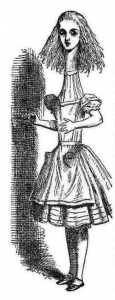Puzzling????
For the last few months I have had the opportunity to walk beside and support students in a course called HLTH 4551 – Directed Studies Practicum in Substance Use and Concurrent Disorders. In this course, students further their understanding of the relational application of theory and practice in the treatment and prevention of problematic substance use and mental health disorders during their experiential learning journeys in their practicum setting.
- What are the intended learning outcomes of the course? Do the learning outcomes reflect high-level cognitive skills or low-level skills (pay attention to the verbs)?
Learning Outcomes/Objectives of HLTH 4551
By successfully working through the learning activities in this course, the student will be able to:
- Develop foundational and/or basic competency in applicable technical and behavioural skills as defined in the competency profile for Canada’s Substance Abuse Workforce.
- Develop practical understanding of a variety of interventions used in the prevention and treatment of substance use and mental health disorders in Canada.
- Recognize codes and guidelines for ethical and professional practice by members of Canada’s Substance Abuse Workforce.
- Develop and apply skills in the synthesis and delivery of evidence-based knowledge to persons/families/colleagues and communities affected by substance use and mental health disorders.
- Demonstrate effective time management and organizational skills in the practice environment.
- Gain first-hand experience in the challenges, struggles, successes, thoughts, feelings, and behaviours of persons attempting a behaviour change.
- Develop an appreciation of the challenges faced by persons attempting to overcome substance use and mental health disorders.
- Appreciate the role of other health professions in the provision of care and the importance of interprofessional collaboration.
- How is student learning assessed in the course (essays, quizzes, journals, machine-gradable tests, portfolios)?
To successfully complete this course, the student must achieve a passing grade of 50% or higher on the overall course and 50% or higher on the mandatory final project. This is done through essays, an oral presentation, a final written project and a mid term and final evaluation process with their placement preceptor and their faculty instructor.
- In what ways are the intended learning outcomes and the assessments aligned or not?
This is a puzzling question; one might query both alignment and non-alignment. Learning outcomes and assessments will be relative to the student’s narrative of learning and their use of community echo (Dr. Peter Leslie, personal communication, February 28, 2019), the multiple partners that participate in the community of co-inquiry with the student, who, together co-construct and co-create meaningful learning. If one connects with their multiple partners in their community of co-inquiry and one invites community echo then feedback as assessment has its own narrative with self and others.
- Identify 2-3 items or assessments that are worded in such a way that they limit students to a unistructural or multistructural response at best and re-write them so that they require a relational response at worst and include the results in your post.
Pieces of this course include both unistructural and multistructural responses, however, my hope is that I am relationally co-constructing the overlapping of a community of co-inquiry relative to each student’s diverse narrative of learning so that the student witnesses and experiences new and meaningful narratives of relational learning in their respective setting. Through our exchanges with others we co-create something new. This is an invitation to the student to be part of the co-creation of their learning experience in this course.

 Just like Alice cried, when she was stretching very tall toward the ceiling before she unlocked the door with the golden key to her relationally rich adventures in Wonderland, I too have become “curiouser and curiouser” (Carroll, 2006, p. 8) about where this new online learning journey may take me. I am full of curious questions at this point…. How will I unlearn my old ways and learn ne
Just like Alice cried, when she was stretching very tall toward the ceiling before she unlocked the door with the golden key to her relationally rich adventures in Wonderland, I too have become “curiouser and curiouser” (Carroll, 2006, p. 8) about where this new online learning journey may take me. I am full of curious questions at this point…. How will I unlearn my old ways and learn ne